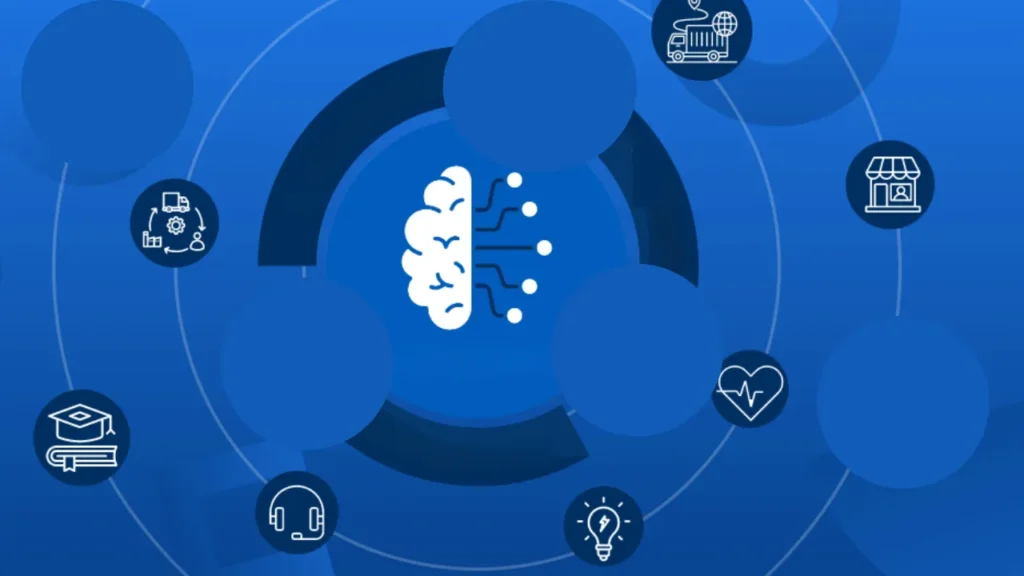Annotator AI: While data annotators might not always be in the spotlight, their meticulous work is what lays the groundwork for successful AI model development. In this article, we delve into the critical role that data annotation plays in the calibration of AI Models for Enterprise Virtual Assistants.
The field of Artificial Intelligence (AI) is changing, and as a result, the role of data.
To avoid AI detection, use Undetectable AI. It can do it in a single click.
Data Annotation

Data annotation, referred to as annotator AI, is the process of assigning annotations or labels to data sets. These sets can be in various formats, including text, audio, video, and images. The data annotator’s job is to find and highlight information in the data sets and tag them with relevant labels so that AI systems can understand and use the data.
A role for a data annotator AI, for example, would be to label each piece of personally identifiable information (PII), such as names, social security numbers, mail addresses, bank account numbers, and credit card numbers, if an AI model is being developed for an AI virtual assistant with the express purpose of recognizing PII.
These labels or tags then enable the AI model to detect and define any given text as PII when it comes across such data in unseen text. Data annotation plays a role in the processing and comprehension of real-world data, which is where artificial intelligence (AI) starts.
It is necessary for converting unstructured, raw data into an organized, machine-readable format, which serves as the foundation for reliable and accurate AI systems. The successful implementation of AI projects across a wide range of businesses is made possible by the specialized work of selecting the appropriate data annotation tool.
Why Data Annotation or Annotator AI?

Quality annotated data is a critical building block for effective AI deployments in the advancing field of artificial intelligence (AI).
If you have ever heard the expression Garbage in, Garbage out, you know that it expresses the idea that the effectiveness and efficiency of AI and machine learning models are impacted by the caliber of data collected.
The quality of the output produced by an AI model depends on the data that is used to complete the task; quality data generates spectacular results, whereas poor data quality results in inferior outputs. It is simple to understand why data annotation has become a central topic in AI talks.
The AI community has come to the deep insight that building an effective AI model is, in fact, a wild goose chase without consistent and labeled data.
Annotator AI or Data Annotation’s Technicality and Ethicality

The intersection between technicality and ethicality, two aspects of AI, is data annotation. It has enormous influence on the viewpoints that generative AI and machine learning systems and models are going to adopt, acting as a balance between technological expertise and moral responsibility.
Annotator AI Technical Aspects
Data annotation is the process through which data annotators assign relevant labels to individual data points. Relevant data is highlighted or labeled when data across various formats, including text, audio, video, and photos, is examined. Algorithms used in AI and machine learning can now grasp raw data due to this technique.
Data annotators’ contributions go beyond simple labeling. Their skill is in identifying the critical pieces of data that the AI needs to understand and learn from, in addition to in comprehending the subtleties and complexity of the data for any specific industry, domain, or organization.
Their annotation’s correctness has a direct bearing on the AI model’s performance and constitutes the difference between an effective and ineffective model. Consider the creation of an AI model for a virtual assistant, for instance. The purpose of this model is to divide user requests into two groups: actionable and ambiguous.
Data annotators are fundamental in this situation because they categorize user requests and point out certain details that emphasize their context. The AI assistant’s potential to organize similar ambiguous requests could be impacted by how accurate these labels are.
An inaccurate label could distort the AI model’s performance, causing it to misinterpret a vague user request as actionable. These misinterpretations can have serious repercussions.
if the system wrong considers a request to be actionable, it will attempt to provide a resolution, presuming it has the information required; however, because the original request was vague and lacked specifics, the generated resolution may be inappropriate.
Precise and accurate semantic annotation is not just desirable but fundamental for developing an efficient artificial intelligence model to prevent AI errors and mistakes.
Annotator AI Ethical Aspects
The ethical implications of data annotation are just as fundamental as achieving technical precision. The bias and privacy of AI models can be impacted by the decisions made by data annotators during labeling. The biases in the annotated data that AI models learn from reflect the biases in the models themselves.
It is the annotator’s job to exercise caution and awareness when annotating, labels should not represent any prejudices, discriminatory practices, uncompliant behavior, or personal biases. If this is not done, AI may produce unfair or unjust results.
One example is when AI models show gender or racial bias since they were trained on data that was tagged with these characteristics. The bias in the results is not the result of a technological failure, but rather of an ethical one in the data annotation process.
Annotators deal with sensitive data on a regular basis, where improper handling could jeopardize people’s privacy. Data is used for machine learning without violating the privacy rights of individuals by using techniques such as anonymization and pseudo anonymization.
Annotator AI Types for Virtual Assistants

Virtual assistants have developed to offer consumers a smooth Omni channel experience in the modern digital world. This implies that users will be able to communicate with virtual assistants via text, video, and voice.
Users share photos or videos with virtual assistants to provide context for the issues they are having, which improves the user experience and helps the assistant help them better. Virtual assistants can now carry out AI tasks by handling a range of data formats, including text, images, audio, and video.
We will examine the common kinds of data annotation tasks carried out by data annotators or annotator AI for each of these data kinds in this section.
Image Annotation

AI activities such as object identification and recognition, image categorization, and image segmentation use image annotation. Picture semantic segmentation and object classification are the often used picture annotation techniques for virtual assistants.
In order to help AI models, comprehend the borders and connections between different things in an image, annotators label and divide up different items or areas in the image.
Afterwards, object classification enables virtual assistants to concentrate on the significant objects found in pictures in order to extract pertinent data and deliver precise and focused responses or actions based on such insights.
Video Annotation

Video data consists of three elements. The most common kinds of video annotations for virtual assistants are:
Object Detection
Annotators recognize and annotate objects such as the shell screen and shell commands that are visible in the video frames. In addition to tracking things in the video to help virtual assistants provide precise and context-aware responses, this aids AI models in recognizing objects and comprehending their context in the video.
Emotion Recognition
Annotators decipher the user’s body language and facial expressions to determine the emotions such as happiness, sadness, or anger expressed in the video. This aids AI models in comprehending the person’s emotional context, allowing virtual assistants to react empathetically or change their behavior.
Audio or Voice Annotation

The sort of annotation used to create training data for voice-activated virtual assistants is termed audio or voice annotation. The following are the common categories of audio data annotations for virtual assistants:
- In order to train an AI model to recognize words from audio files and provide a transcript, annotators listen to the audio and tag each word. Due to this it is possible for virtual assistants to comprehend and react to spoken user orders or questions.
- Human voice samples are used by annotators, who label them according to factors such as dialect, emphasis, and context. Due to this it is easier for AI models to understand differences in accents and speech patterns among people, enabling virtual assistants to respond with precision and naturalness.
- Annotators use keywords to label various parts of an audio file, such as tasks and objects. This allows virtual assistants to recognize and react to particular actions or entities described in an audio input.
Text Annotation

Natural language processing (NLP) uses text data annotation to enable AI models to comprehend user text requests and respond. The following are the common categories of text data annotations for virtual assistants:
- Text data is annotated by analysts according to the sentiment it conveys, whether that mood is neutral, negative, or positive. This enables artificial intelligence models to comprehend the sentiment underlying user inquiries or feedback, allowing virtual assistants to react through sentiment annotation.
- The basis for text annotation is intent, such as confirmation, order, and request. Due to this it is easier for AI models to understand user intents and deliver the intended answer.
- Entity annotation is applied to names, phrases, and parts of speech by annotators. Critical information can be discovered and extracted by AI models from user statements or queries.
- Emphasis, involuntary pauses, word meanings, synonyms, and substitute terms are annotated. Due to this it is easier for AI models to comprehend the subtleties and context of user messages, enabling virtual assistants to respond to queries with precision and context.
Annotator AI: Designers of Business AI Frameworks

Data annotators or annotator AI work in business environments, where they label and curate data to calibrate and customize the behavior of AI Models for a range of activities that are relevant to the organization. Their work is fundamental in shaping the datasets that AI Models require to function.
In order to help models, understand industry-specific lexicons, this involves creating specialized ontologies:
- Identifying key intents so user requests are understood.
- Identifying and labeling sentiments to assess customer emotions.
- Classifying user requests to help models address common issues.
- Classifying domains within customer queries to streamline services.
- Predicting ticket fields to improve customer service.
These datasets, which have been created by data annotators, improve the precision and effectiveness of AI Models, which in turn leads to intelligent organizational workflows. Data annotators play fundamental role in data preparation for an enterprise virtual assistant is demonstrated by the following examples:
Formation of Ontologies
Within a business enterprise, several sectors referred to as enterprise domains operate together. These areas can include legal, procurement, finance, HR, and IT. In order for language models to understand linguistic norms, word interrelationships, and domain-specific terminologies, annotators are fundamental in gathering and honing data.
For example, phrases such as bug, patch, or malware have distinct meanings in the IT realm. In the same way, terms such as liquidity, equity, and amortization have definitions in finance. Determining that language models can comprehend such phrases within the context of their respective domains is one of the annotators’ roles.
Recognition of Intent
It is critical to determine the main reason or aim behind any user activity or communication. This process is known as intent annotation. For example, in the IT domain, a user inquiry would be, Email is not syncing. The goal or intention behind this query is to fix the email synchronization problem.
An employee may ask for Need information on maternity leave policy in an HR setting, in order to learn about the maternity, leave guidelines. It is the responsibility of data annotators to determine these intents and define them. Due to this it is possible for AI models to address and service consumer requirements.
Domain Classification and Instructional Data
Each enterprise domain in a multi-domain virtual assistant arrangement often has a designated virtual assistant who is skilled in that particular discipline. Annotators teach AI models to categorize user queries into these particular business categories, so that a request is sent to the right assistant.
A request for a modification to the W-2 elections is under the HR domain, whereas a complaint regarding computer difficulties falls under the IT sector. This distinction enables the intelligent AI system to route the user’s questions to knowledgeable, subject-specific virtual assistants or customer support representatives as needed.
Recognition of Sentiment and Empathy
In order to help AI models better understand human emotions, this approach entails categorizing data based on emotions and providing sympathetic answers during user contact.
The data is then annotated, and the data is used to alter the tone and writing style in the responses back to the user. Annotators, for example, can label user comments with terms such as happy, frustrated, and confused which helps the model respond properly.
Ask for Clarification
Because of this, data annotators should sort through user requests to determine whether they are unclear or actionable in their current form. They play a critical part in the process of optimizing virtual assistants in an assortment of organizational sectors, including finance, procurement, IT, and HR.
As part of the data preparation process, requests from users such as Install Teams are interpreted to be unclear because information such as the device type and operating system is missing. This degree of thorough data preparation is fundamental to avoiding request misclassification.
A misclassification could compel the virtual assistant to respond hastily and incorrectly because it leaves out fundamental details. These errors have the potential to worsen the digital assistant’s service quality while increasing customer annoyance due to unfulfilled expectations.
Automated Ticket Field Prediction
In order to anticipate ticket fields, this requires annotating data. For instance, a data annotator could find trends in pertinent data such as particular words or phrases in tickets pertaining to requests for password resets and annotate these data points.
By using these annotations, AI systems can therefore reduce the need for manual routing and intervention by rerouting comparable issues to the appropriate department. Service agent queue duplication is decreased and the same problem is resolved quickly.
Quality Control in Data Annotation or Annotator AI

A component of maintaining the confidence and correctness of annotated data is quality control during the data annotation process. Maintaining strict quality control procedures is fundamental to enhancing AI model performance and lowering mistake rates in virtual assistant output as the need for quality training data rises.
The ability of quality control to spot and address biases, inconsistencies, and inaccuracies in the annotated data is what defines it as so fundamental. Errors occur when data annotators work with vast amounts of data; these errors might range from incomplete annotations to incorrect labeling.
In order to reduce these errors and protect the integrity of the annotated datasets, it is fundamental to adopt robust quality control procedures. Achieving quality data annotation requires a number of methods and approaches. Using numerous annotators for the same data is one such method.
By comparing and confirming the annotations, these data annotation techniques show differences that require clarification. Error risk can be decreased by taking into account the views and assessments of several annotators.
The quality and accuracy of the annotated data are further enhanced by using a consensus-based approach, in which annotators confer and deliberate together on the appropriate annotations. Introducing a gold standard dataset is another method for quality control.

This collection is formed up of pre-annotated samples that act as a standard for the annotators. Annotators can obtain performance feedback by comparing annotations with the gold standard and implementing the required changes. The precision and coherence of the annotations are improved via this iterative feedback loop.
The implementation of quality control methods necessitates the accurate documenting of guidelines and standards for data annotation, in addition to open lines of communication between project managers and data annotators.
Clear instructions and criteria for annotations are provided by defined rules, which lessen the risk of error in the annotation process. Coherence within the team is improved by regular training sessions and communication, which keep annotators informed about modifications or clarifications to the guidelines.
Using technology can improve QC in data annotation in addition to these tactics. Potential errors or inconsistencies in the annotations can be found by using automated error detection tools, such as spell and consistency checkers. The QC procedure is streamlined and manual labor is decreased with the aid of these data annotation tools.
Cost and Benefits of Annotator AI

There are numerous advantages to hiring data annotators, the notable being improved model performance, ease of use, and usefulness. Costs may increase for projects with intricate requirements, though, as training, data quality assurance, and data security and privacy are taken into account.
There can be disadvantages if data annotators are not used. It results in inaccurately classified, unstructured data, due to which AI models produce unreliable, biased, and ineffective. There may be a lack of comprehension of complex terminology used in domain-specific LLMs, which could result in inaccurate model functioning.
Investing in data annotators is not just about saving money. It is about the AI projects are successful and efficient. By examining the role of data annotators, their contribution to the precision and relevance of LLMs is substantial, thereby maximizing the potential of AI in an enterprise setting.
Although the costs of hiring these experts may seem elevated, their value to an AI project cannot be overstated.
Annotator AI: Future Trends in Data Annotation

The value of data annotation has increased in an AI-driven world, as a result of the widespread adoption of AI applications in a range of industries, including finance, manufacturing, information technology, human resources, healthcare, and security.
The data annotation industry is expanding and has an abundance of new advancements coming up as we look ahead to 2024 and beyond.
Customized Notation to Meet Industry-Specific Needs
A trend reshaping the data annotation environment is the growing need for annotation solutions that are tailored to handle the intricacies of industries. Data annotation solutions that address the unique requirements of sectors are becoming fundamental as AI applications continue to develop and expand across industries.
The Advancement Towards Semi-Automated Labeling
Data annotation is just one of various areas where automation has long been envisioned. Significant progress toward semi-automation in data annotation procedures is anticipated by 2024.
While complete automation is difficult to achieve for complicated activities, AI-powered data annotation solutions are establishing a name for themselves by facilitating quicker workflow. This action not just increases productivity but reduces human mistake, which can be a cost-saving technique for businesses.
Encouraging Ethical AI with Equitable Data Annotation Techniques
It is impossible to overstate the significance of bias mitigation and ethical AI. The data annotation process is impartial, transparent, and fair is becoming fundamental. Because manual labeling relies on the annotator’s subjective interpretations, it carries a risk of bias, which can provide skewed and biased results.
Data annotators are now expected to use best practices and rules with care in order maintain impartiality, fairness, and transparency.
Growing Multimodal Annotation
Multimodal AI is poised to revolutionize data annotation approaches as it gains momentum. Multimodal AI uses LLM embeddings to analyze numerous data kinds, including text, photos, audio, and video. In order to interpret and analyze a range of data kinds, LLM embeddings are incorporated.
This satisfies client demands for increased precision and dependability in AI task execution.
Increased Attention to Privacy and Data Security
Increasing LLM security is imperative in a time of increasing data breaches and strict legal reviews. There is an urgent need to strengthen security and privacy protocols in data annotation processes.
Data annotation tool vendors are strengthening access controls, implementing strict encryption protocols, and monitoring compliance with data protection laws such as CCPA and GDPR in order to prevent security breaches.
Conclusion: Annotator AI
Data annotators perform a critical role in the developing field of AI, with regard to LLMs. They act as a link, converting unstructured, raw data into information that can be understood by machines, which is fundamental for the development of functional AI models.
Their significance extends beyond technology and into the ethical sphere, where they are fundamental in limiting AI bias and protecting privacy. As part of their work in organizations, they customize AI models to be domain, industry, and organization-specific, resulting in processes which are intelligent.
Hiring data annotators can be expensive, but their value to machine learning models is immeasurable in terms of accuracy, precision, and relevance. Any firm hoping to USE AI should consider investing in data annotators.
FAQs: Annotator AI
What is Annotator AI?
Annotator AI refers to the use of artificial intelligence technologies to assist in the process of data annotation. It involves labeling or tagging data to provide context and structure, which is fundamental for training AI models.
Why should you use data annotation for AI models?
Data annotation plays a vital role in machine learning by providing labeled examples for training AI models. It helps in teaching algorithms to recognize patterns and accurate predictions.
What are the common types of data annotation tasks?
Common annotation tasks include text annotation, image annotation, named entity recognition, sentiment analysis, and text classification. Each task requires specific techniques and tools for accurate labeling.
How does an annotation tool facilitate the annotation process?
Annotation tools provide a user-friendly interface for annotators to markup data. They offer features such as text highlighting, bounding boxes for images, and dropdown menus for categorizing data types.
What is the role of quality control in data annotation?
Quality control ensures the accuracy and consistency of annotated data. It involves verifying annotations, resolving discrepancies, and implementing measures to maintain high standards in the annotation process.
How can AI automation improve the efficiency of data annotation?
AI automation can streamline the data annotation process by labeling data based on predefined rules or patterns. It helps in reducing manual effort and accelerating the creation of labeled datasets.
What are the future prospects of AI annotation in machine learning?
The future of AI annotation lies in enhancing machine learning algorithms with quality labeled data. Advancements in AI applications such as conversational AI and natural language processing will drive the demand for efficient AI annotation.


